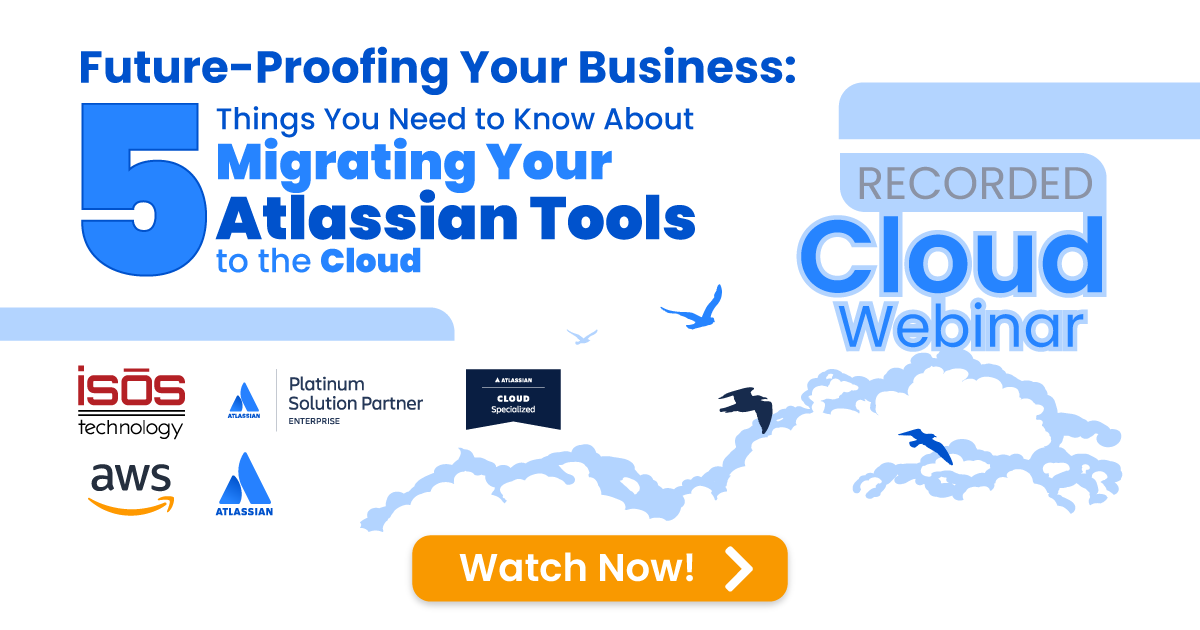Guest Contributor: Wayne Sadin
 If your organization depends on creating and maintaining software for its success, then you’ve heard of Atlassian. Since the 2002 debut of Jira, Atlassian’s first product, software developers and development managers have relied on the growing family of Atlassian products to meet tight deadlines, improve team collaboration, and deliver world-class service. Today 10 million users use Atlassian products to help them do their best work.
If your organization depends on creating and maintaining software for its success, then you’ve heard of Atlassian. Since the 2002 debut of Jira, Atlassian’s first product, software developers and development managers have relied on the growing family of Atlassian products to meet tight deadlines, improve team collaboration, and deliver world-class service. Today 10 million users use Atlassian products to help them do their best work.
In 2002, there was no ‘cloud’: each organization installed and ran whatever collection of hardware and software needed to deliver services to employees and customers. Like every other software vendor, Atlassian built products designed to run in those on-premise environments.
Hyperscale Cloud Has Changed the Game
Fast-forward to 2023, hyperscale cloud has changed how IT departments deploy and deliver their services. For many firms, gone are the days of ‘racking and stacking’ servers, storage, and networking devices, then configuring multiple software layers to support the tools users needed. Hyperscale cloud firms like Amazon Web Services (AWS) provide reliable, secure, scalable, and cost-effective infrastructure—called IaaS, or ‘Infrastructure as a Service’—that allows CIOs to rent, rather than buy, IT resources that support the applications users need.
This change from ‘buy & build & maintain’ to ‘rent’ frees CIOs to focus on high-value business services rather than commodity hardware and software, enabling IT to be more of a value-adding business partner.
Atlassian, as a leader in IT department productivity tools, saw the value of delivering its products via the cloud and allowing customers to run the products on-prem. Partnering with AWS, one of the largest hyperscale cloud providers, Atlassian has introduced cloud versions of Jira, Jira Service Management, Confluence, and Bitbucket.
IT Departments Lean on Tool Experts to Manage Their Platform
To be clear, on-prem versions of Atlassian products have been supported on IaaS platforms like AWS for years if a client wanted to install and operate the products in a hyperscale data center. Atlassian Cloud products go further: they have been re-architected to take advantage of cloud capabilities and free IT departments from the drudgery of installing, operating, and upgrading Atlassian tools (a product class called SaaS or ‘Software as a Service’).
Atlassian Cloud products are installed, maintained, and operated by Atlassian experts and run on AWS infrastructure. These experts know the Atlassian products better than anyone else, and they have a close working relationship with AWS experts who know that platform inside and out. This means, to an Atlassian Cloud customer, that fixes and new releases are tested and installed by experts; adding new users and new features/products is done by amending a subscription rather than installing new hardware and software; that disaster recovery and performance optimization are done for you. In other words, your IT team can focus on results and leave ‘under the hood’ work to teams that focus on just that.
Cloud is First, Cloud is Now, and Cloud is the Future
When they rearchitected Atlassian products for SaaS delivery atop AWS, Atlassian engineers also added powerful new capabilities in areas including security, governance, analytics, and mobile tools. And since Atlassian—like most vendors—understands that cloud is the future, they’re investing heavily to add capabilities to their cloud products.
If you’re a CIO with a ‘Cloud First’ philosophy, Atlassian Cloud is a natural. If you’re not yet Cloud First, exposing your developers and infrastructure teams to Atlassian Cloud tools is a great way to gain experience with AWS and the SaaS mindset. And if you just want your developers to have the best tools to do their jobs, Atlassian’s investment in Cloud will ensure you stay world-class.
Sign up to receive more great content
Learn more about Atlassian and how Isos can help by signing up to receive our latest blogs, eBooks, whitepapers and more.














